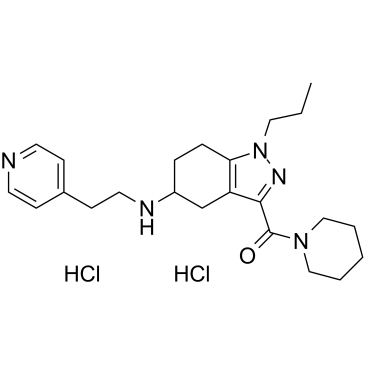NUCC-390 dihydrochloride |
| Catalog No.GC39573 |
NUCC-390 dihydrochloride is a novel and selective small-molecule?CXCR4 receptor?agonist.
Products are for research use only. Not for human use. We do not sell to patients.

Cas No.: 2749281-71-6
Sample solution is provided at 25 µL, 10mM.
NUCC-390 dihydrochloride is a novel and selective small-molecule CXCR4 receptor agonist. NUCC-390 dihydrochloride induces internalization of CXCR4 receptors and acts in an opposite way of AMD3100 [1]. NUCC-390 dihydrochloride promotes nerve recovery of function after neurodegeneration in vivo[2].
[1]. Mishra RK, et al. Discovery and characterization of novel small-molecule CXCR4 receptor agonists and antagonists.Sci Rep. 2016 Jul 26;6:30155.
Average Rating: 5 (Based on Reviews and 26 reference(s) in Google Scholar.)
GLPBIO products are for RESEARCH USE ONLY. Please make sure your review or question is research based.
Required fields are marked with *




















